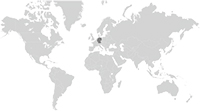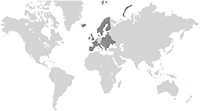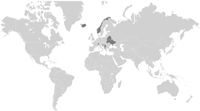Background Information Mycoplasma free Cell Culture
Products Mycoplasmafree Cell Culture
Frequently Asked Questions
► Must one run a mycoplasma detection test after each standard application of MycoRAZOR®?
Yes. It is important to check that mycoplasmas have been completely eliminated by MycoRAZOR® (e.g. by using MycoSPY® or MycoSPY® Master Mix) to prevent the establishment of resistance. As resistance can be built up in the same way as in all use of antibiotics, complete elimination of mycoplasmas is vital.
► After the successful use of MycoRAZOR® and testing free of mycoplasma, a culture has developed further mycoplasma contamination. How did this happen?
The animal products used in cell culture are primary sources of mycoplasma contamination. To avoid this risk, use only fetal bovine serum (FBS) and trypsin that are guaranteed mycoplasma free.
Mycoplasmas belong to the class of mollicutes and thus lack cell walls, they are resistant to many antibiotics that attack cell wall synthesis. The user itself is thus an important source of contamination in routine use of this type of antibiotic (e.g. penicillin/streptomycin) for cell culture. In this case, non-sterile working conditions go unnoticed, as the addition of antibiotics prevents the growth of most bacteria – and thus macroscopic effects – while allowing mycoplasmas to multiply unhindered.
In addition, cross-contamination from another cell culture is possible. For this reason always test all cultured cells and replace any potentially contaminated cell culture material (medium, FBS, trypsin, buffer).
► Does MycoRAZOR® contain doxy- or tetracycline-like antibiotics?
No. MycoRAZOR® does not contain any doxy- or tetracycline-like antibiotics.
► What is the difference between the MycoSPY® and the MycoSPY® Master Mix kit?
► Many commercial PCR-based mycoplasma test kits include a Positive Control and Internal control. What is the difference?
Most kits for PCR detection of mycoplasmas contain a plasmid as a Positive Control that encodes a cloned amplificate of the corresponding kit. This ensures the functionality of the primers. This plasmid generates a DNA amplificate of the same or similar size as would be expected if mycoplasma contamination were present. Therefore, the Positive Control must be carried out in a separate preparation. In addition, an Internal Control is usually included to ensure that the PCR is not inhibited by proteins and cell debris from the cell culture supernatant. The Internal Control generates any amplificate that differs in size from the amplificate of a cell sample contaminated with mycoplasma. The Internal Control can therefore be included in each approach.
► Why does Biontex not offer Positive Controls for the MycoSpy® kits?
To ensure the functionality of our kit, we have developed an Internal Control that is very similar to a Positive Control. This Internal Control consists of a plasmid with a part of the mycoplasma genome (16S rRNA consensus sequence) with flanking primer binding sites. These binding sites also match the primers used to detect the mycoplasma genome. However, the Internal Control generates an amplicon that differs in length. An amplicon of the same length, as a true Positive Control would generate, could lead to false positive results due to cross-contamination. A true Positive Control would therefore not provide any real added value. We have therefore decided not to offer such a control.
► I have used a Positive Control from another kit, but have no positive detection. What could be the reason for this?
The Positive Controls contained in commercially available kits are usually PCR amplificates of the corresponding kits that have been cloned into plasmids. They therefore do not cover the entire mycoplasma genome and therefore only match the respective kit.
► I have a positive result for the presence of the mycoplasma genome if I do not use the Internal Control. When the Internal Control is present, this detection disappears. What is the reason for this?
The presence of the Internal Control reduces the sensitivity of the PCR slightly. The reason for the reduction in sensitivity is that the Internal control uses the same primers as the mycoplasma genome. Normally this is not a problem, as mycoplasmas multiply very quickly, so that a contaminated cell culture reaches a high concentration of mycoplasma genome in a short time. However, the disadvantage is that contamination at an early stage with a very low mycoplasma concentration is not detected. To obtain full sensitivity, we recommend testing the sample in two individual tubes, one with and one without Internal Control.
► What is the sensitivity of the MycoSPY® or MycoSPY® Master Mix Kit?
Both the MycoSPY® Master Mix kit and the MycoSPY® kit detect at least 100 copies of a mycoplasma genome under optimal conditions (highly purified DNA, no Internal Control). The Internal Control reduces the sensitivity slightly. Since mycoplasmas reproduce relatively quickly after contamination of a cell culture, this sensitivity is easily sufficient.
We therefore recommend adding the Internal Control in every PCR to ensure the absence of any existing inhibitor (proteins, cell debris) originating from the cell culture supernatant.
► The cells to be examined with the MycoSPY® or MycoSPY® Master Mix Kit were cultivated with antibiotics. Would it be better to use antibiotic-free media when performing the assay
It is not necessary to avoid conventional antibiotics such as penicillin, streptomycin or gentamicin, as these do not inhibit the assay of MycoSPY® Master Mix Kit the or the MycoSPY® kit.
► Is it possible to store cell culture supernatants to be examined with the MycoSPY® or MycoSPY® Master Mix Kit?
Yes. We recommend storage at-20°C without additives (e.g. DMSO). After thawing, the cell culture supernatants should be prepared as described in the manual.
► What is the recommended waiting time before performing the assay with the MycoSPY® or MycoSPY® Master Mix using freshly thawed cells?
We recommend cultivating the cells for at least 48–72 hours or until at least 80% coverage of the growth area is achieved. For suspension cells, cell density should be approximately in the range of the cell number recommended for subculturing. Since the mycoplasmas are detected in the cell culture supernatant, the medium should not be changed in the interim.
► How often should I test for mycoplasmas?
We recommend performing the PCR for mycoplasmas (e.g. with MycoSPY® or MycoSPY® Master Mix) least every 1-2 months, particularly when cells are cultured in the presence of antibiotics (e.g. pen/strep). These antibiotics prevent the discovery of unsterile working techniques but allow mycoplasma contamination of cell cultures.











